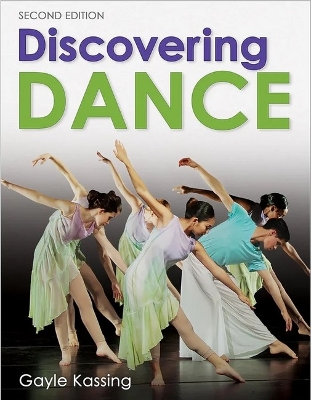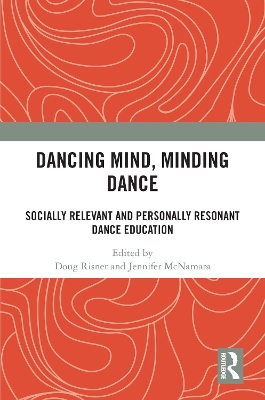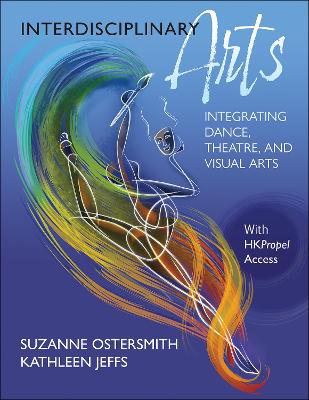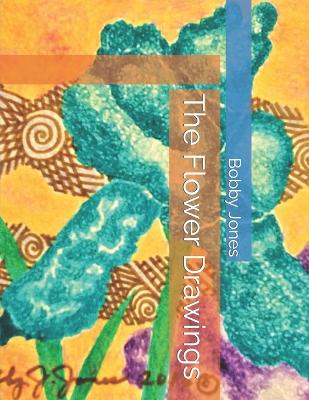Experiencing Dance
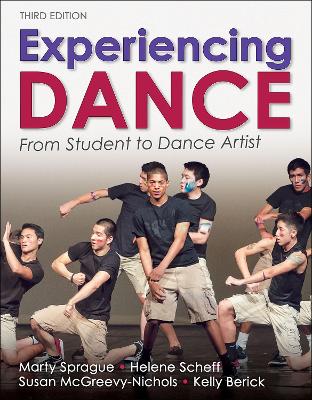 portes grátis
portes grátis
Experiencing Dance
From Student to Dance Artist
Scheff, Helene; McGreevy-Nichols, Susan; Sprague, Marty; Berick, Kelly
Human Kinetics Publishers
10/2024
240
Dura
9781718219991
15 a 20 dias
Descrição não disponível.
Unit I. Recognizing Your Movement Potential
Chapter 1. Surveying Your Body at Work
Lesson 1.1 Stand on Your Own Two Feet
Lesson 1.2 Body Mechanics: Matching Movement to Muscles and Bones
Lesson 1.3 Dancing at the Joint
Lesson 1.4 Personal Physical Survey
Chapter 2. Warming Up, Taking Class, and Cooling Down
Lesson 2.1 Your Personal Warm-Up
Lesson 2.2 Dance Class Basics
Lesson 2.3 Stretch What You Strengthen and Cool Down
Chapter 3. Choosing a Dance Form That Suits You
Lesson 3.1 Determine Your Movement Preferences
Lesson 3.2 Recognize Your Physical Traits and Abilities
Lesson 3.3 Connect Your Physical Traits and Abilities With Movement Preferences
Chapter 4. Learning More Than Steps
Lesson 4.1 Develop Thinking Skills Through the Study of Dance
Lesson 4.2 Apply Dance Learning Strategies to Other Life Situations
Lesson 4.3 Explore Careers Beyond Performing
Unit II. Becoming a Dancer
Chapter 5. Diversifying Your Dance Training
Lesson 5.1 Observe and Analyze to Improve Technique in All Dance Forms
Lesson 5.2 Experience and Train in Various Styles and Forms of Dance
Lesson 5.3 Sharpen Your Rehearsal and Performance Strategies
Chapter 6. Improving Your Skills
Lesson 6.1 Find Classes and Teachers Who Meet Your Needs
Lesson 6.2 Share Your Knowledge
Lesson 6.3 Practice Makes Permanent
Unit III. Making Connections Through Dance
Chapter 7. Expressing Ideas and Emotions
Lesson 7.1 Dance as Nonverbal Communication
Lesson 7.2 Dance as a Report or Essay Without Words
Lesson 7.3 Dance as Social Commentary
Chapter 8. Exploring Dance as an Art Form
Lesson 8.1 Differences Between Everyday Movement and Dance
Lesson 8.2 Theatrical Dance
Lesson 8.3 Your Aesthetic Preferences
Chapter 9. Connecting to Community and Tradition
Lesson 9.1 Cultural Dance
Lesson 9.2 Historical Dance
Lesson 9.3 Social Dance
Unit IV. Becoming a Choreographer
Chapter 10. Creating Dances
Lesson 10.1 Choreographic Elements
Lesson 10.2 Choreographic Processes
Lesson 10.3 Choreographic Structures
Chapter 11. Choreographing With a Seven-Step Method
Lesson 11.1 Choose Subject Matter and Explore Movement
Lesson 11.2 Coordinate Music and Movement, Explore Possibilities, Refine, and Memorize
Lesson 11.3 Add Finishing Touches and Perform
Chapter 12. Showcasing Your Work
Lesson 12.1 Costumes and Props
Lesson 12.2 Lighting, Scenery, and Sound
Lesson 12.3 Production Information and Time Line
Unit V. Refining Yourself as a Dance Artist
Chapter 13. Learning From the Works of Others
Lesson 13.1 View, Analyze, Interpret, and Critique Others' Works
Lesson 13.2 Learn From the Choreography of Others
Lesson 13.3 Improve Your Performance by Watching Others
Chapter 14. Sharing Your Art Form
Lesson 14.1 Create and Plan Presentations for Specific Settings
Lesson 14.2 Find Places to Share Your Presentation
Lesson 14.3 Give Back to Your Community
Chapter 15. Developing Your Portfolio, Resume, and Audition Skills
Lesson 15.1 Build Your Portfolio
Lesson 15.2 Create Your Resume
Lesson 15.3 Prepare for Auditions
Chapter 1. Surveying Your Body at Work
Lesson 1.1 Stand on Your Own Two Feet
Lesson 1.2 Body Mechanics: Matching Movement to Muscles and Bones
Lesson 1.3 Dancing at the Joint
Lesson 1.4 Personal Physical Survey
Chapter 2. Warming Up, Taking Class, and Cooling Down
Lesson 2.1 Your Personal Warm-Up
Lesson 2.2 Dance Class Basics
Lesson 2.3 Stretch What You Strengthen and Cool Down
Chapter 3. Choosing a Dance Form That Suits You
Lesson 3.1 Determine Your Movement Preferences
Lesson 3.2 Recognize Your Physical Traits and Abilities
Lesson 3.3 Connect Your Physical Traits and Abilities With Movement Preferences
Chapter 4. Learning More Than Steps
Lesson 4.1 Develop Thinking Skills Through the Study of Dance
Lesson 4.2 Apply Dance Learning Strategies to Other Life Situations
Lesson 4.3 Explore Careers Beyond Performing
Unit II. Becoming a Dancer
Chapter 5. Diversifying Your Dance Training
Lesson 5.1 Observe and Analyze to Improve Technique in All Dance Forms
Lesson 5.2 Experience and Train in Various Styles and Forms of Dance
Lesson 5.3 Sharpen Your Rehearsal and Performance Strategies
Chapter 6. Improving Your Skills
Lesson 6.1 Find Classes and Teachers Who Meet Your Needs
Lesson 6.2 Share Your Knowledge
Lesson 6.3 Practice Makes Permanent
Unit III. Making Connections Through Dance
Chapter 7. Expressing Ideas and Emotions
Lesson 7.1 Dance as Nonverbal Communication
Lesson 7.2 Dance as a Report or Essay Without Words
Lesson 7.3 Dance as Social Commentary
Chapter 8. Exploring Dance as an Art Form
Lesson 8.1 Differences Between Everyday Movement and Dance
Lesson 8.2 Theatrical Dance
Lesson 8.3 Your Aesthetic Preferences
Chapter 9. Connecting to Community and Tradition
Lesson 9.1 Cultural Dance
Lesson 9.2 Historical Dance
Lesson 9.3 Social Dance
Unit IV. Becoming a Choreographer
Chapter 10. Creating Dances
Lesson 10.1 Choreographic Elements
Lesson 10.2 Choreographic Processes
Lesson 10.3 Choreographic Structures
Chapter 11. Choreographing With a Seven-Step Method
Lesson 11.1 Choose Subject Matter and Explore Movement
Lesson 11.2 Coordinate Music and Movement, Explore Possibilities, Refine, and Memorize
Lesson 11.3 Add Finishing Touches and Perform
Chapter 12. Showcasing Your Work
Lesson 12.1 Costumes and Props
Lesson 12.2 Lighting, Scenery, and Sound
Lesson 12.3 Production Information and Time Line
Unit V. Refining Yourself as a Dance Artist
Chapter 13. Learning From the Works of Others
Lesson 13.1 View, Analyze, Interpret, and Critique Others' Works
Lesson 13.2 Learn From the Choreography of Others
Lesson 13.3 Improve Your Performance by Watching Others
Chapter 14. Sharing Your Art Form
Lesson 14.1 Create and Plan Presentations for Specific Settings
Lesson 14.2 Find Places to Share Your Presentation
Lesson 14.3 Give Back to Your Community
Chapter 15. Developing Your Portfolio, Resume, and Audition Skills
Lesson 15.1 Build Your Portfolio
Lesson 15.2 Create Your Resume
Lesson 15.3 Prepare for Auditions
Este título pertence ao(s) assunto(s) indicados(s). Para ver outros títulos clique no assunto desejado.
Dance; education; textbook; high school; secondary school; art; production; performance; career
Unit I. Recognizing Your Movement Potential
Chapter 1. Surveying Your Body at Work
Lesson 1.1 Stand on Your Own Two Feet
Lesson 1.2 Body Mechanics: Matching Movement to Muscles and Bones
Lesson 1.3 Dancing at the Joint
Lesson 1.4 Personal Physical Survey
Chapter 2. Warming Up, Taking Class, and Cooling Down
Lesson 2.1 Your Personal Warm-Up
Lesson 2.2 Dance Class Basics
Lesson 2.3 Stretch What You Strengthen and Cool Down
Chapter 3. Choosing a Dance Form That Suits You
Lesson 3.1 Determine Your Movement Preferences
Lesson 3.2 Recognize Your Physical Traits and Abilities
Lesson 3.3 Connect Your Physical Traits and Abilities With Movement Preferences
Chapter 4. Learning More Than Steps
Lesson 4.1 Develop Thinking Skills Through the Study of Dance
Lesson 4.2 Apply Dance Learning Strategies to Other Life Situations
Lesson 4.3 Explore Careers Beyond Performing
Unit II. Becoming a Dancer
Chapter 5. Diversifying Your Dance Training
Lesson 5.1 Observe and Analyze to Improve Technique in All Dance Forms
Lesson 5.2 Experience and Train in Various Styles and Forms of Dance
Lesson 5.3 Sharpen Your Rehearsal and Performance Strategies
Chapter 6. Improving Your Skills
Lesson 6.1 Find Classes and Teachers Who Meet Your Needs
Lesson 6.2 Share Your Knowledge
Lesson 6.3 Practice Makes Permanent
Unit III. Making Connections Through Dance
Chapter 7. Expressing Ideas and Emotions
Lesson 7.1 Dance as Nonverbal Communication
Lesson 7.2 Dance as a Report or Essay Without Words
Lesson 7.3 Dance as Social Commentary
Chapter 8. Exploring Dance as an Art Form
Lesson 8.1 Differences Between Everyday Movement and Dance
Lesson 8.2 Theatrical Dance
Lesson 8.3 Your Aesthetic Preferences
Chapter 9. Connecting to Community and Tradition
Lesson 9.1 Cultural Dance
Lesson 9.2 Historical Dance
Lesson 9.3 Social Dance
Unit IV. Becoming a Choreographer
Chapter 10. Creating Dances
Lesson 10.1 Choreographic Elements
Lesson 10.2 Choreographic Processes
Lesson 10.3 Choreographic Structures
Chapter 11. Choreographing With a Seven-Step Method
Lesson 11.1 Choose Subject Matter and Explore Movement
Lesson 11.2 Coordinate Music and Movement, Explore Possibilities, Refine, and Memorize
Lesson 11.3 Add Finishing Touches and Perform
Chapter 12. Showcasing Your Work
Lesson 12.1 Costumes and Props
Lesson 12.2 Lighting, Scenery, and Sound
Lesson 12.3 Production Information and Time Line
Unit V. Refining Yourself as a Dance Artist
Chapter 13. Learning From the Works of Others
Lesson 13.1 View, Analyze, Interpret, and Critique Others' Works
Lesson 13.2 Learn From the Choreography of Others
Lesson 13.3 Improve Your Performance by Watching Others
Chapter 14. Sharing Your Art Form
Lesson 14.1 Create and Plan Presentations for Specific Settings
Lesson 14.2 Find Places to Share Your Presentation
Lesson 14.3 Give Back to Your Community
Chapter 15. Developing Your Portfolio, Resume, and Audition Skills
Lesson 15.1 Build Your Portfolio
Lesson 15.2 Create Your Resume
Lesson 15.3 Prepare for Auditions
Chapter 1. Surveying Your Body at Work
Lesson 1.1 Stand on Your Own Two Feet
Lesson 1.2 Body Mechanics: Matching Movement to Muscles and Bones
Lesson 1.3 Dancing at the Joint
Lesson 1.4 Personal Physical Survey
Chapter 2. Warming Up, Taking Class, and Cooling Down
Lesson 2.1 Your Personal Warm-Up
Lesson 2.2 Dance Class Basics
Lesson 2.3 Stretch What You Strengthen and Cool Down
Chapter 3. Choosing a Dance Form That Suits You
Lesson 3.1 Determine Your Movement Preferences
Lesson 3.2 Recognize Your Physical Traits and Abilities
Lesson 3.3 Connect Your Physical Traits and Abilities With Movement Preferences
Chapter 4. Learning More Than Steps
Lesson 4.1 Develop Thinking Skills Through the Study of Dance
Lesson 4.2 Apply Dance Learning Strategies to Other Life Situations
Lesson 4.3 Explore Careers Beyond Performing
Unit II. Becoming a Dancer
Chapter 5. Diversifying Your Dance Training
Lesson 5.1 Observe and Analyze to Improve Technique in All Dance Forms
Lesson 5.2 Experience and Train in Various Styles and Forms of Dance
Lesson 5.3 Sharpen Your Rehearsal and Performance Strategies
Chapter 6. Improving Your Skills
Lesson 6.1 Find Classes and Teachers Who Meet Your Needs
Lesson 6.2 Share Your Knowledge
Lesson 6.3 Practice Makes Permanent
Unit III. Making Connections Through Dance
Chapter 7. Expressing Ideas and Emotions
Lesson 7.1 Dance as Nonverbal Communication
Lesson 7.2 Dance as a Report or Essay Without Words
Lesson 7.3 Dance as Social Commentary
Chapter 8. Exploring Dance as an Art Form
Lesson 8.1 Differences Between Everyday Movement and Dance
Lesson 8.2 Theatrical Dance
Lesson 8.3 Your Aesthetic Preferences
Chapter 9. Connecting to Community and Tradition
Lesson 9.1 Cultural Dance
Lesson 9.2 Historical Dance
Lesson 9.3 Social Dance
Unit IV. Becoming a Choreographer
Chapter 10. Creating Dances
Lesson 10.1 Choreographic Elements
Lesson 10.2 Choreographic Processes
Lesson 10.3 Choreographic Structures
Chapter 11. Choreographing With a Seven-Step Method
Lesson 11.1 Choose Subject Matter and Explore Movement
Lesson 11.2 Coordinate Music and Movement, Explore Possibilities, Refine, and Memorize
Lesson 11.3 Add Finishing Touches and Perform
Chapter 12. Showcasing Your Work
Lesson 12.1 Costumes and Props
Lesson 12.2 Lighting, Scenery, and Sound
Lesson 12.3 Production Information and Time Line
Unit V. Refining Yourself as a Dance Artist
Chapter 13. Learning From the Works of Others
Lesson 13.1 View, Analyze, Interpret, and Critique Others' Works
Lesson 13.2 Learn From the Choreography of Others
Lesson 13.3 Improve Your Performance by Watching Others
Chapter 14. Sharing Your Art Form
Lesson 14.1 Create and Plan Presentations for Specific Settings
Lesson 14.2 Find Places to Share Your Presentation
Lesson 14.3 Give Back to Your Community
Chapter 15. Developing Your Portfolio, Resume, and Audition Skills
Lesson 15.1 Build Your Portfolio
Lesson 15.2 Create Your Resume
Lesson 15.3 Prepare for Auditions
Este título pertence ao(s) assunto(s) indicados(s). Para ver outros títulos clique no assunto desejado.

